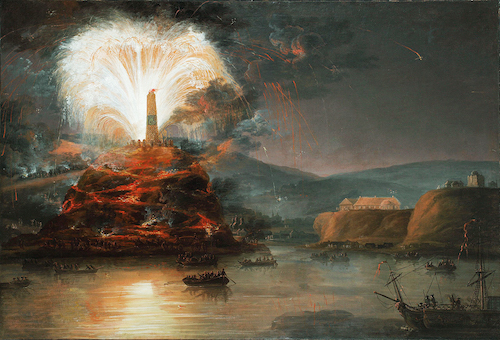Паноптический взгляд и панорамный вид в императорской России конца XVIII – начала XIX века
DOI:
https://doi.org/10.17892/app.2022.00015.259Ключевые слова:
Российская империя; паноптикон; панорама; скопические режимы; взгляд; вид; потемкинские деревни; общественная жизнь; фельетон; променад; туризмАннотация
В Российской империи паноптический взгляд и панорамный вид развивались тесно переплетаясь, начиная с конца XVIII века. Оба скопических режима требовали особой организации пространства и видимости, чтобы установить двойные отношения между наблюдателем и наблюдаемыми, как это позже произойдет в кинематографе. Цель данной статьи – реконструировать их взаимосвязь, начиная с "инспекционной поездки" императрицы Екатерины II в Крым в 1787 году, и привлекая описания и изображения из современных газет, путевых заметок, и картин. В начале девятнадцатого века вновь созданная общественная жизнь набережных и парков Санкт-Петербурга была запечатлена обоими режимами наблюдения; однако дистанция между наблюдателем и наблюдаемым сократилась. В это же время возникла новая форма движущихся панорам, таких как "Променад в Екатерингофе 1 мая 1824-25 гг." Карла фон Гампельна (Karl K. Hampeln). Фон Гампельн ввел в свое карнавальное шествие различные саморефлексирующие мотивы видения и наблюдения. Те же визуальные и пространственные явления описывались и в современных городских фельетонах о Санкт-Петербурге, посвященные ранним туристическим экскурсиям, которые были тесно связаны с имперской и династической культурой памяти. Автор анализирует фельетон о Екатерингофском променаде, написанный журналистом и издателем Фадеем (Тадеушем) Булгариным, который был участником этого события. После подавленного восстания декабристов в 1825 году дистанция между наблюдателем и наблюдаемым вновь увеличилась, как в "Панораме Невского проспекта" И. А. Иванова 1830-35 годов. Около 1900 года, когда панорамы начали конкурировать с ранним кинематографом, в кинематографической Панораме Транссибирской магистрали, выставленной в павильоне российских губерний на Всемирной выставке в Париже, смешались имперский и туристический взгляды, показ и самопрезентация, паноптический взгляд и панорамный вид. Наконец, автор прослеживает как оба скопических режима существовали в городском кино, кинопоездах 192-30-х годов, и в фильме Александра Сокурова "Русский ковчег" (2002, Россия, Германия, Япония, Канада, Финляндия и Дания).

Загрузки
Опубликован
Как цитировать
Выпуск
Раздел
Лицензия
Copyright (c) 2022 Кино, медиа и цифровая культура Центральной и Восточной Европы

Это произведение доступно по лицензии Creative Commons «Attribution» («Атрибуция») 4.0 Всемирная.





